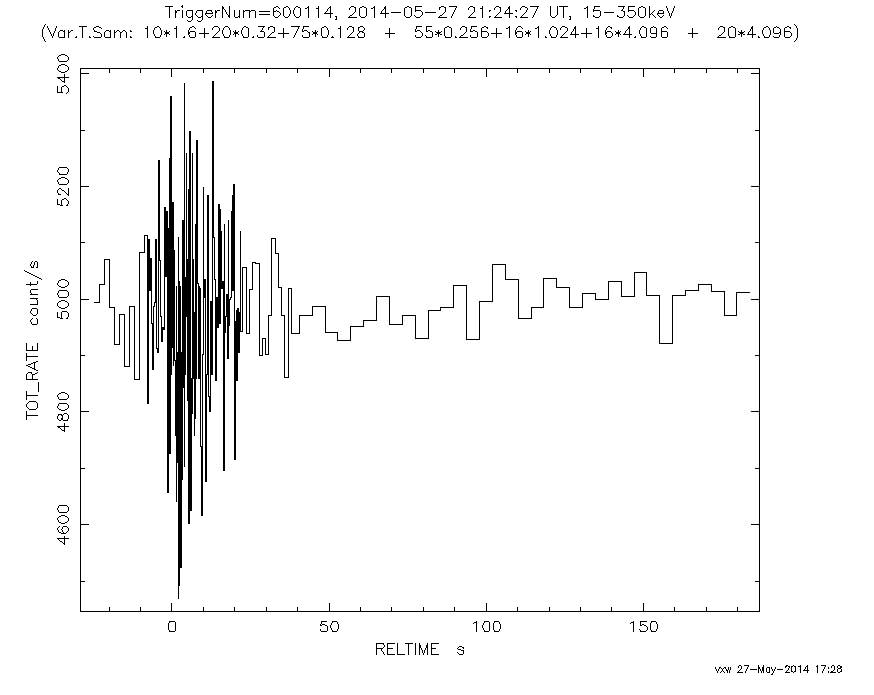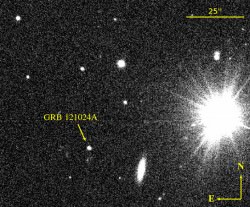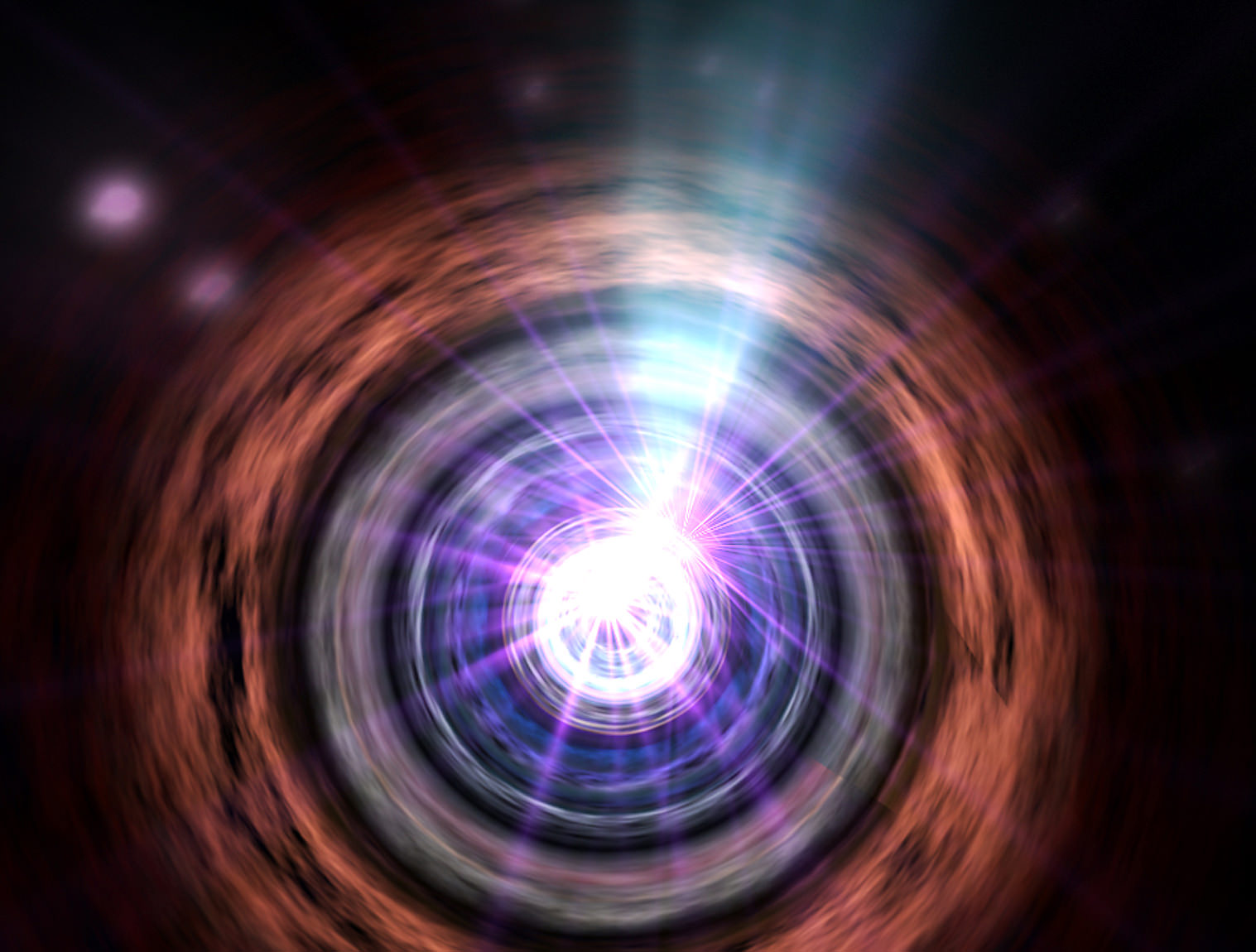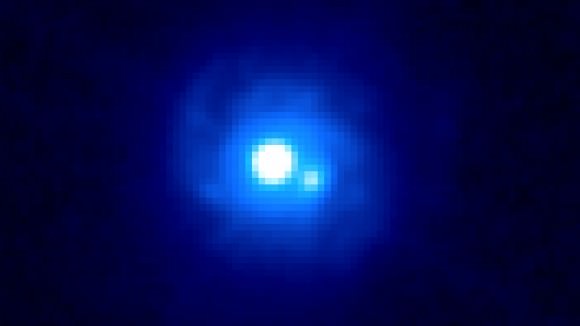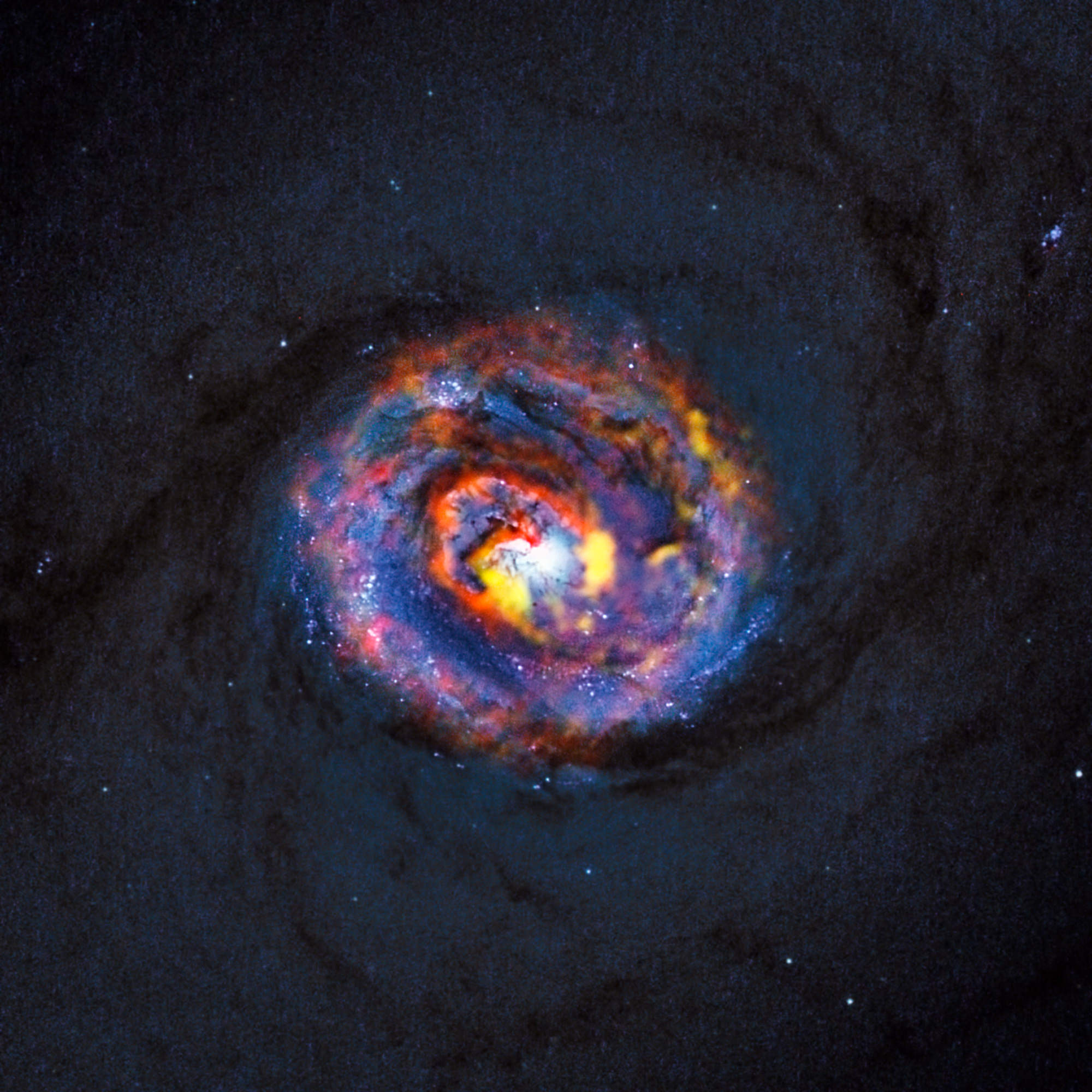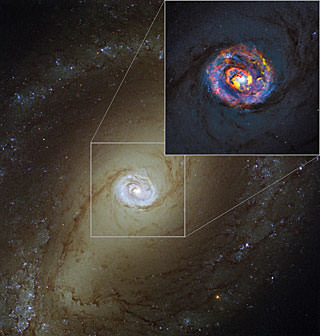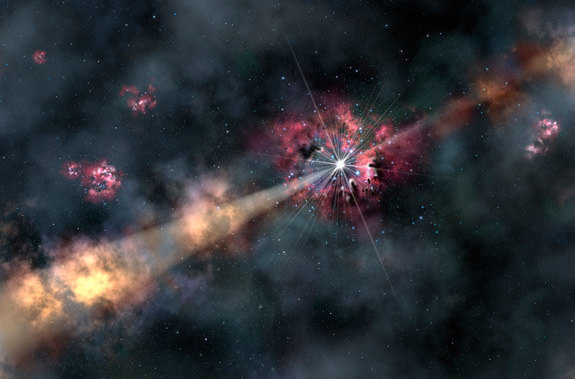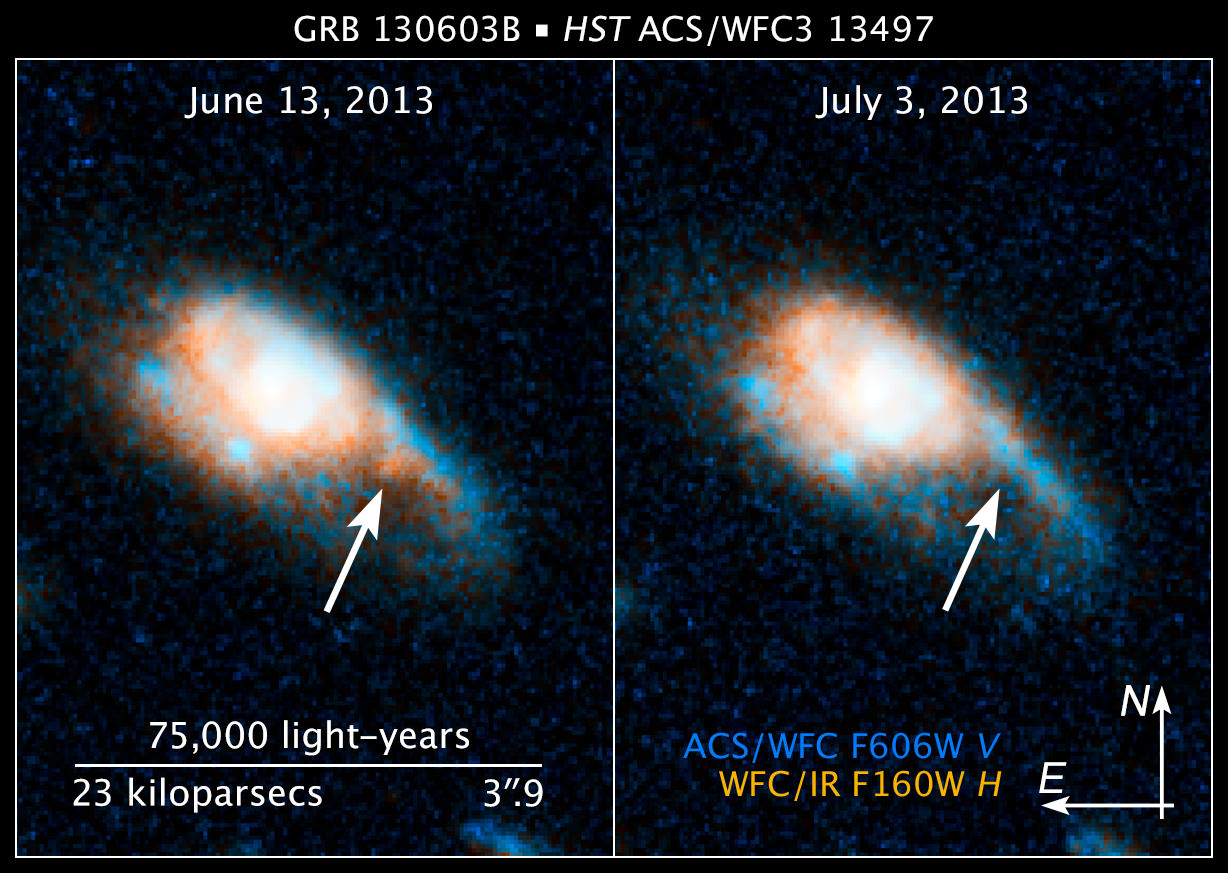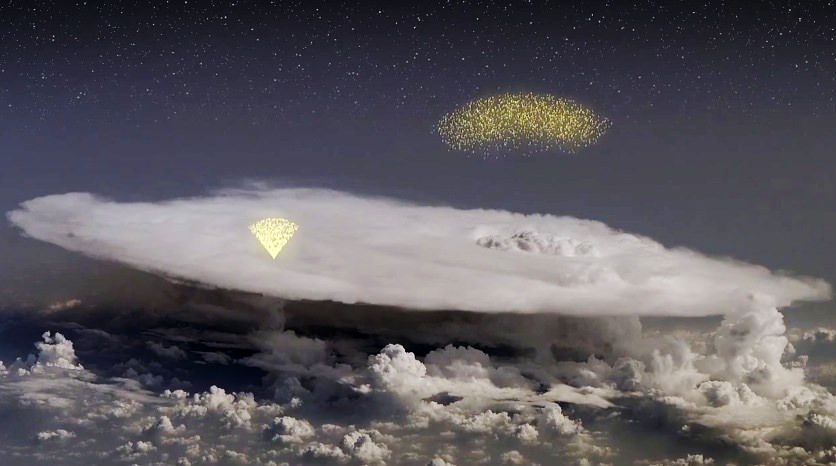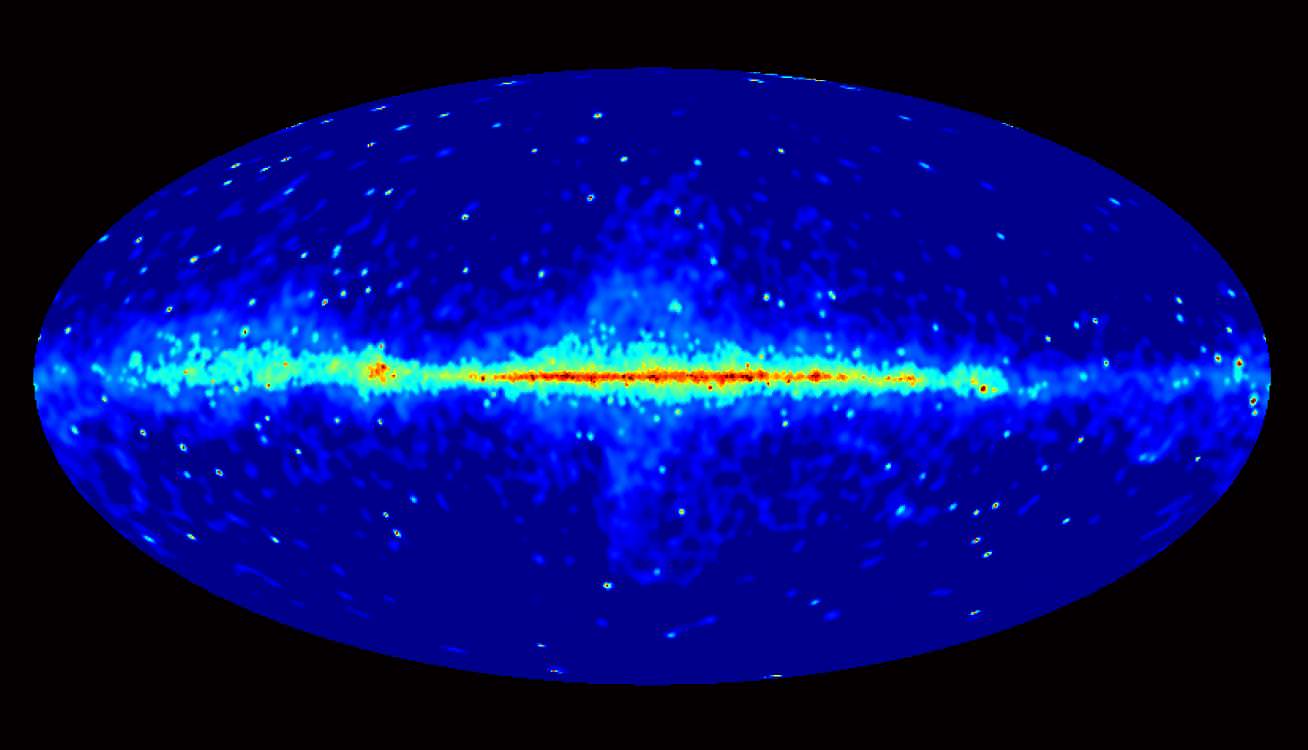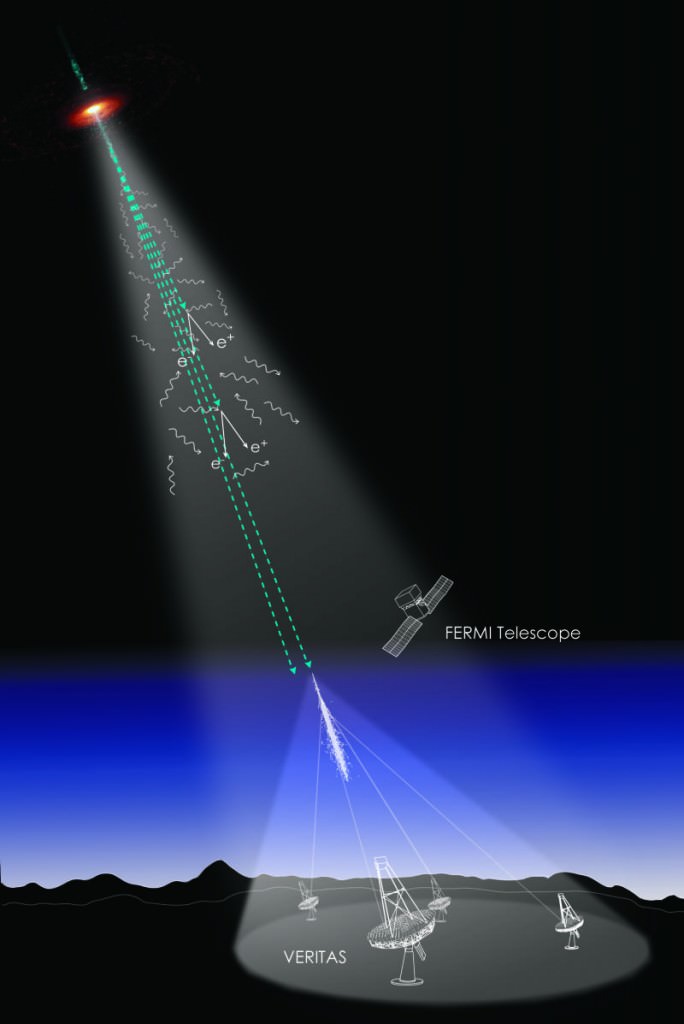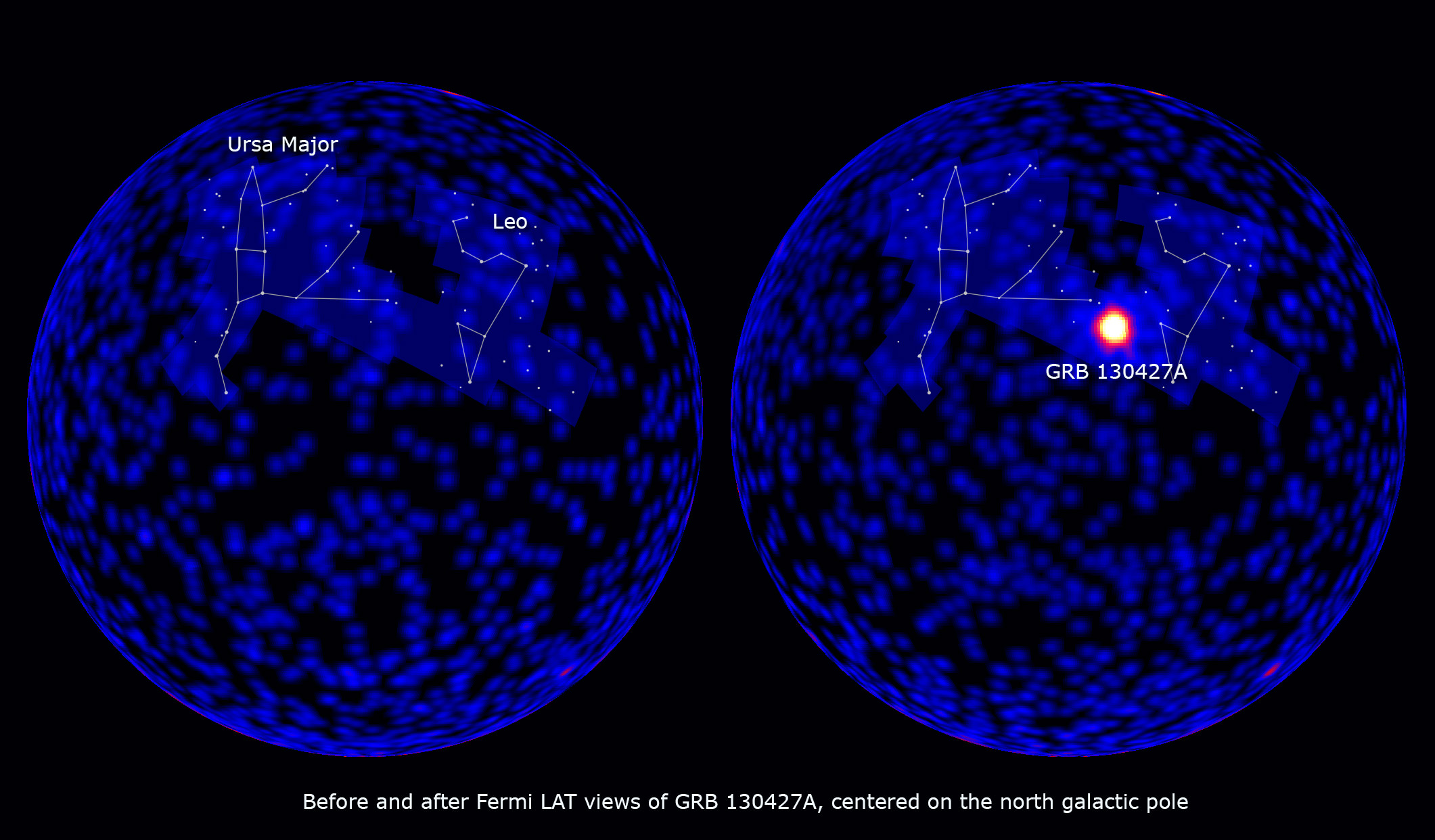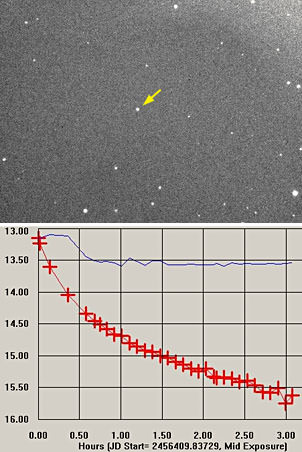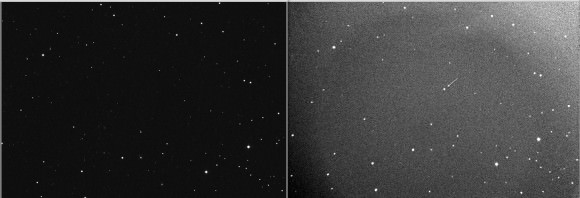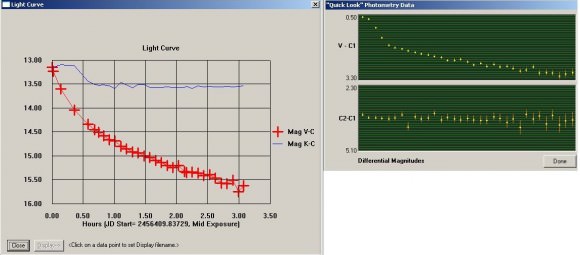Update (5/28/14 9:20 am EDT): This alert may have been a false alarm. Further analysis showed the initial brightness was overestimated by a factor of 300. An official circular from the Swift-XRT team says “therefore do not believe this source to be in outburst. Instead, it was a serendipitous constant source in the field of view of a BAT subthreshold trigger.” Please read our subsequent article here that provides further information and analysis.
Something went boom in the Andromeda Galaxy, our next door neighbor. The Swift Gamma-Ray Burst telescope detected a sudden bright emission of gamma rays. Astronomers aren’t sure yet if it was a Gamma-Ray Burst (GRB) or an Ultraluminous X-Ray (ULX) or even an outburst from a low-mass x-ray binary (LMXB), but whatever it turns out to be, it will be the closest event of this kind that we’ve ever observed.
One of the previous closest GRBs was 2.6 billion light-years away, while Andromeda is a mere 2.5 million light years away from Earth. Even though this would be the closest burst to Earth, there is no danger of our planet getting fried by gamma rays.
According to astronomer (Bad Astronomer!) Phil Plait, a GRB would have to be less than 8,000 light years away cause any problems for us.
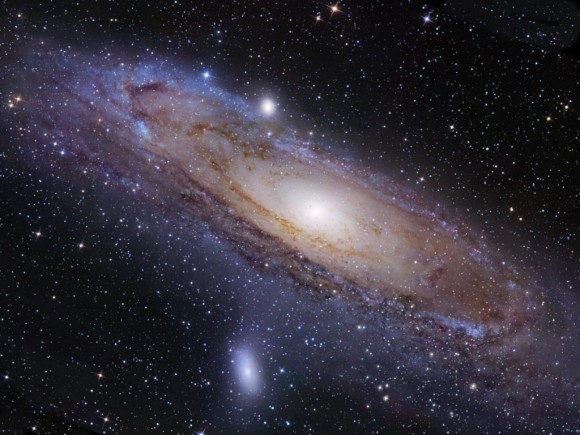
This event is providing astronomers with a rare opportunity to gain information vital to understanding powerful cosmic explosions like this.
If it is a GRB, it likely came from a collision of neutron stars. If it is a ULX, the blast came from a black hole consuming gas. If the outburst was from a LMXB, a black hole or neutron star annihilated its companion star.
Astronomers should be able to determine the pedigree of this blast within 24-48 hours by watching the way the light fades from the burst.
How this Blast was Detected
The Swift Burst Alert telescope watches the sky for gamma-ray bursts and, within seconds of detecting a burst Swift relays the location of the burst to ground stations, allowing both ground-based and space-based telescopes around the world the opportunity to observe the burst’s afterglow. As soon as it can, Swift will swiftly shift itself to observe the burst with its X-ray and ultraviolet telescopes.
The burst alert came at 21:21 pm Universal time on May 27, 2014; three minutes later, the X-ray telescope aboard Swift was observing a bright X-ray glow.
News of the event quickly spread across the astronomical community and on Twitter, sending astronomers scrambling for their telescopes.
Remember scene in Contact where they got a weird signal & called up astronomers all over the world to look? That happens for GRBs. #GRBm31
— Katie Mack (@AstroKatie) May 27, 2014
According to astronomer Katie Mack on Twitter, if this is indeed a GRB, this gamma-ray burst looks like a short GRB.
No two GRBs are the same, but they are usually classified as either long or short depending on the burst’s duration. Long bursts are more common and last for between 2 seconds and several minutes; short bursts last less than 2 seconds, meaning the action can all be over in just milliseconds.
As we noted earlier, more should be known about this blast within a day or so and we’ll keep you posted. In the meantime, you can follow the hashtag #GRBM31 on Twitter to see the latest. Katie Mack or Robert Rutledge (Astronomer’s Telegram) have been tweeting pertinent info about the burst.

